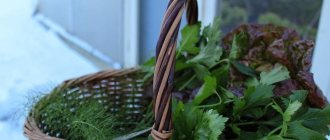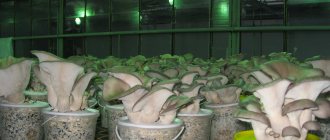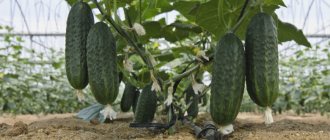Lately, lemons have been planted in closed ground. And it is quite possible to obtain a high yield of citrus under such conditions. Any plant loves care and care, and like humans, citrus plants have their own diseases that need to be noticed in time. You need to know everything, and most importantly, have an idea of how to grow lemons in a greenhouse.
Conditions for growing lemon bushes
When deciding to grow a lemon tree, it is worth considering: the crop cannot grow in “unrelated” climatic conditions. An exotic plant, whose homeland is warm latitudes, is very demanding in terms of conditions. That is why you will need to use a greenhouse to cultivate it.
In the conditions of central Russia, lemon can only be grown in a greenhouse
Only closed soil will provide lemons with everything they like:
- High humidity.
- Diffuse but bright light.
- Required high temperatures all year round.
The plant also constantly needs optimal aeration of the root system.
When growing a lemon tree in a greenhouse, it is very important to correctly form its crown, for which pruning is done in compliance with certain principles.
The procedure is necessary not only to give the crop an attractive appearance. Proper formation of the bush ensures optimal fruiting and regulation of the plant growth rate. As part of this work, it is recommended to systematically prune the shoots, pinching them and thinning them in accordance with the age of each specific crop.
Lemon bush at home
Advice. In the first 3 years, it is important to remove fatty shoots that grow towards the inside of the crown.
It is equally important to systematically free the bush from mechanically damaged, weak and dried branches. When forming the crown of a lemon bush, it is recommended to pay attention to the main shoots. They should not be ahead of other branches in their development. If one of them has accelerated in growth and oppresses the neighboring ones, it is worth pinching it or cutting it off.
Window-Aquarium.
If you have no other option, they suggest making an aquarium window to contain lemons. The result will be something like a small greenhouse. This is labor-intensive and is implemented very rarely. For example, in my entire life, I have only seen it once. What is it?. The window is removed and the window sill is extended outwards. A double-glazed window is inserted from the inside, which opens into the room. On the other hand, an aluminum frame with glass is strengthened onto the window sill. In words, it doesn’t seem very difficult, but not everyone will raise their hand to mutilate a standard window. More often they simply glaze a loggia or balcony.
Key rules for caring for lemons in a greenhouse
Full watering is the main thing that needs to be provided to lemons in a greenhouse. For irrigation, it is recommended to use settled tap liquid. To soften it a little, it is worth using special products available in tablet form.
Lemons in a greenhouse need good watering
For irrigation you can also use the following type of water:
- snow;
- rain;
- well
Any natural sources will do.
It is also very important not to place lemon bushes, if they are grown in pots, near heating sources. This approach will provoke the formation of excessively dry air. The ovaries, leaves and buds will fall off.
To ensure optimal humidity levels, it is recommended to mist lemons several times daily. To do this, use tap water at room temperature that has been standing for 24 hours. It is optimal to use a regular spray bottle. You can also install a special device. A humidifier equipped with a timer will provide an optimal level of humidity that is comfortable for lemon bushes.
The greenhouse with lemons should have good lighting and regular ventilation.
Temperature is a separate point that is extremely important for growing lemons indoors. Considering this culture to be southern, many gardeners strive to provide the citrus with maximum heat. In fact, you shouldn't do this. Low light levels coupled with high temperature levels can cause significant problems in the development and growth of the crop. In winter, the optimal temperature level in a greenhouse for growing lemon trees ranges from 10 to 14 degrees Celsius.
Citrus crops (and lemons especially) react extremely negatively to the humid atmosphere that stagnates in the greenhouse. To avoid this, it is recommended to provide some kind of regular ventilation of the room.
Prerequisites for commercial success
When starting any entrepreneurial business, as a rule, one thinks about the prerequisites for its commercial success: is the game worth the candle? Skeptics unanimously talk about the invincible competition of ground lemon trees, they say, why spend money on an expensive lemon tree if you can buy a kilogram of Turkish lemons for thirty rubles?
“Let’s start with the fact that such lemons travel a long way before getting to your table and, of course, undergo special processing so as not to spoil along the way,” writes Alexey Vostokov, the owner of a home lemonarium, “which cannot be said about lemons with decorative tree. Their rich phytoncides make the fruit a powerful antiseptic.” If we add to this the antibacterial effect of the leaf esters, then the benefits of the medicinal properties of homemade lemons compared to industrial ones look impressive. As they say, money can't buy health.
For those families where children often suffer from colds, a decorative lemon will replace the home doctor. “Promoting a healthy lifestyle also includes a healthy living environment, primarily the home in which a person spends most of his time,” writes Roza Mamedova. – In this regard, a lemon garden and even a separate lemon tree are necessary, like a refrigerator or an air conditioner. More and more people understand this. I am sure there will be a huge demand for lemon trees.”
Composition of soil for greenhouse cultivation of lemons
Loose and neutral soils are excellent for citrus crops. The soil for lemons should have excellent moisture and air permeability. An excellent solution would be a substrate mixed with coarse sand or peat.
Lemons are very picky about soil.
The optimal composition of the soil mixture is represented by a combination of:
- 1 part leaf soil;
- 1 part peat;
- 2 parts of turf land;
- 1 part humus.
Attention! For any quantity of these components, 5% must be allocated to washed river sand.
Before using the soil, it must be disinfected. To do this you need to use a 1% solution of potassium permanganate. You can calcinate the substrate in the oven.
It is very important for gardeners who decide to grow lemons in greenhouse conditions to avoid using soil with an inappropriate composition. Excessive or, on the contrary, insufficient amount of nutrients in the soil can have a detrimental effect on the development of trees and harvest. You also need to take into account the optimal acidity level of the substrate. The normal value ranges from 5.5-7.0 pH.
Lemons in greenhouses are susceptible to various diseases
Physalis
Sowing: from the end of February to the end of April. Germination: 8-15 days at 20-25 °C. Planting pattern: 60 x 100 cm. Harvesting: from August to January. Productivity: 1.5-3 kg per plant.
The wrapper leaves of these nightshades, reminiscent of colored paper lanterns, hide orange-red, cherry-sized fruits with a pleasant sweet taste.
Sowing: lush bushes are grown, like tomatoes, from seeds and from cuttings planted in a previously prepared place. The plants are self-pollinating and are perfect for growing in greenhouses. From August to January, the beautiful yellow flowers continually produce a variety of delicious fruits rich in vitamin C. The plants can be grown for many years or cuttings from them can be rooted. Green fruits the size of a tomato ripen in large decorative “lanterns”.
The most common diseases of lemons
When growing lemons in greenhouse conditions, gardeners may encounter a number of pests that attack the citrus crop. These are mealybugs, thrips, aphids, scale insects, spider mites, and false scale insects. That is why you should periodically inspect the bushes to identify the problem in order to begin a timely fight against it.
Since this culture is susceptible to various infectious diseases, you should be careful about its health. The first symptom of citrus infection is the presence of spotted pigmentation, limp and pale leaves. All infected areas of the plant should be removed immediately. Otherwise, it will not be possible to avoid the death of the entire bush. Not only leaves, but also fruits with signs of infection must be eliminated.
Lemons in a greenhouse need to form a crown in a timely manner, removing excess shoots
One of the most common diseases that can be identified in greenhouse lemons is scab. It is also often called wartiness. It affects branches, fruits and leaves. The first sign of infection is the formation of small warts on the undersides of the leaves. Then the leaves begin to fall. When fruits are affected by scab, lemons take on an unsightly, even ugly shape. The occurrence of the disease is most often caused by the presence of high levels of humidity in the greenhouse. Young tissues are quickly affected by this fungus.
The fight against scab involves systematic spraying for the purpose of prevention. 1% Bordeaux mixture is excellent for this. It is also recommended to destroy affected areas of trees.
Growing lemons in a greenhouse is quite difficult, but you can regularly get a good harvest
In the fight against fungal infections, spraying is recommended. It is recommended to repeat the procedure 2-3 times. The optimal remedy against such citrus diseases is a combination of slaked lime and copper sulfate. The acidity of the mixture should be slightly alkaline or neutral. Otherwise, you can burn the crop.
As you can see, growing lemon trees in a greenhouse is quite a complex and responsible task. However, if you follow all the recommendations listed above, it is quite possible to grow healthy citrus bushes and get a good harvest.
Pear melon, pepino
Propagation by cuttings from February to April. Planting pattern: 50 x 60 cm. Harvesting: from August to December. Productivity: 8-15 fruits per plant.
Pear-shaped melons (pictured) are another variety of nightshades that are very suitable for growing in greenhouses. Plants can be left for the winter.
Care: This plant is grown in the same way as tomatoes. They should be tied to stakes and grown as hanging plants. The purple flowers produce many striped fruits the size of a goose egg, with green flesh. The taste is something between a pear and a melon.
Lemons in a greenhouse - photo
Banana
Reproduces by offspring. Harvest: after 2-4 years. Productivity: 1 bunch per plant.
Bananas of many varieties are grown in Europe in greenhouses in pots or tubs. Bananas are easy to propagate from seeds. However, plants grown from seeds should not be expected to produce edible fruit.
Care: can only be propagated in spring by cuttings. They are well suited for heated greenhouses and winter gardens. They are grown in large tubs or, even better, in fertile soil.
For the formation of flowers and fruits, a soil temperature of at least 12°C is required, plenty of light and weekly liquid organic fertilizers during the growth period from March to August. The substrate in large tubs must be permeable, since bananas cannot tolerate stagnant moisture. The fruits appear 2-3 years after planting, then the plant dies.
What is the structure
An underground greenhouse is a structure, the main part of which is located below the horizon line. At the same time, the roof rises above the ground. It is made transparent so that the roof does not interfere with the penetration of sunlight. Under their influence, the space heats up. In this case, the heat does not leave the structure, but a thermos effect is created.
An underground greenhouse is a structure, the main part of which is located below the horizon line
Materials and tools for construction
It is necessary to prepare in advance everything you need in order not to be distracted from your main work, and for this you will need:
- Cement mixture.
- Sand.
- Shovel.
- Capacity.
- Sheet polycarbonate.
- Construction trowel.
- Film.
- Construction tape.
- Self-tapping screws.
- Hammer.
- Dye.
- Thermoblocks.
Pit preparation
It is necessary to dig a pit; an excavator can best handle this.
Pit size:
- Width 5 meters;
- Depth 2.5 meters.
These are the optimal sizes for maintaining high-quality insolation. It is best to place the pit on one side to the south.
Citrus
are propagated by cuttings and air layering, otherwise by grafting. Transplanted into acidic soil in late winter. Harvesting is all year round.
For several centuries, oranges, lemons and other citrus fruits have been admired in Europe. Therefore, in almost every principality, greenhouses and greenhouses were built for growing these trees. Noble citrus plants, even in the southern regions, need protection from low temperatures, and although in winter they prefer cool and moderately humid rooms, they do not like frost. Citrus fruits are spectacular all year round. At the same time they are decorated with flowers and fruits.
Care: It probably doesn’t make sense to grow trees from seeds yourself! Positive results in this case are rare and depend on genetic characteristics. The effect can be achieved by budding - grafting a bud on a wild lemon, using it as a stable rootstock. True, it is better to buy grafted plants, especially since in our time it is not difficult to purchase them. Nevertheless, propagation by apical cuttings in some species is almost always successful. Lemons root quite successfully in a mixture of peat and sand with the help of growth substances at a temperature of 20-26 ° C for several weeks. Within a year you will be able to see fruits on them. Good success can also be achieved with mature orange cuttings (from June to July), especially in glass felt cubes. This method also gives excellent results when breeding dwarf oranges with small fruits. Tangerines, grapefruits, quinottos and cumgat are more difficult to grow .
Propagation of citrus fruits by air layering, often used in southern countries, is not difficult. Citrus fruits are self-pollinating plants, so you can have just one plant or a whole collection. If necessary, pollen is transferred to the flower with a brush.
All citrus plants need clay, rather acidic, dense soil. Lime-rich water is low in iron, which causes leaves to turn pale. But this deficiency can be eliminated by fertilizing with microelements. Excessive soil moisture can quickly destroy a plant if it has not yet “rested” from a short “drought”. During wintering (in a bright place at a temperature no higher than 10-12°C), the trees are watered very moderately. During the growth period, fertilize weekly. Citrus fruits are damaged by coccids, aphids and sometimes currant buds. They are protected with the help of beneficial insects.
Oranges
There are many varieties of this crop. Washington oranges are considered especially sweet and tasty. They, however, love a lot of sun and require careful care. They need moderate pruning from time to time to keep the plants from becoming overgrown. Trees overwinter at a temperature of 5-10°C.
Dwarf oranges, bitter oranges . These are small, beautiful, but sour oranges. They overwinter near well-lit windows in living quarters at a temperature of 10-14°C. Bitter oranges or bitter oranges . This type of orange is propagated by seeds. The fruits are not eaten fresh, but they are used to make delicious orange marmalade. Plants overwinter at a temperature of 5°C. Lemons can - as in Italy (pictured) - be propagated by apical layering or cuttings.
Hinotto
A dwarf type of bitter orange with small leaves and medium-sized fruits with a porous skin. Overwinters at a temperature of 5-8°C.
Grapefruit
A productive, fairly heat-loving greenhouse plant. The large, light yellow fruits have a sweet and sour taste. Like its close relatives namnelmus and citronate lemon, it overwinters at a temperature of 10-12°C.
Kumgat
A dwarf plant from Japan with many small egg-shaped orange fruits, it is an ornamental pot plant. The fruit is eaten with its thin skin; it has a sour taste, but is very aromatic. The plant overwinters at a temperature of about 5°C.
Mandarin
The small tree is a beautiful productive tub plant with sweet fruits. In summer it is taken out into the open air in a place protected from wind and prolonged precipitation, and in winter it is kept at a temperature of 5-8°C.
Lemon
Lemons are strong and tall tub plants, although they are very sensitive to stagnant dampness. Very large plants tolerate radical pruning well, after which they bloom more profusely and produce more new shoots. There are many delicious varieties available. They overwinter at a temperature of about 5°C.
treeland.ru
Arbutus
Reproduction is very difficult , by air layering. Transplant in spring into acidic soil for azaleas. Harvest: late autumn. Productivity: moderate.
An ornamental, evergreen shrub with laurel-shaped leaves and beautiful bell-shaped flowers (in winter!) can be ordered by mail. In Europe, this greenhouse plant is grown in cold and cool greenhouses, as well as in winter gardens. The strawberry tree is especially decorated with red fruits, the size of cherries, and shaped like strawberries. The fruits are edible. They can also be used to make excellent liqueurs.
Passionfruit, passion fruit
Propagated by sowing seeds or planting cuttings in early summer. Replant every 1-2 years in ordinary soil for flowers. Harvest: summer and autumn. Productivity: single fruits, only after pollination.
Among the approximately 500 beautiful and vigorous species of passionflower, there are about 20 varieties with edible fruits. These include tropical giant grenadilla from Brazil, suitable for cultivation in greenhouses. The most popular among passionflowers is the world famous passion fruit, also a very beautiful climbing plant that adapts well to the conditions of heated greenhouses. Its aromatic fruits can be cut in half and the pulp eaten with a spoon. They are also used for making juice.
Care: seedlings are grown from commercially available seeds at a temperature of 25-28°C for 4-6 weeks. Climbing plants with lush shoots grow. Rooted cuttings or aerial shoots of selected plants bloom more luxuriantly than seedlings. Numerous greenish-white flowers produce egg-sized fruits. As they ripen, they wrinkle and turn blue. In winter, plants should be kept at a temperature of 10°C, watering should be limited and shoots should be trimmed.
Tomato tree, tamarillo
Propagated by seeds in January-May. Transplant in late winter into soil rich in nutrients, fertilized with humus. Harvest: from autumn to winter. Productivity: 3-5 kg of fruits depending on the size of the plant.
The fruits of this tree are bright red. This nightshade plant from the mountain slopes of the Andes has a very distant relationship with tomatoes. From the seeds during the summer a tree grows up to 2 m high, and then grows in breadth. For wintering in a cool room, trim to a third of the tree's height. The plant sprouts new shoots and first forms clusters of fragrant white-pink flowers, on which fruits quickly ripen after self-pollination. Under the inedible skin of the fruit there is a pleasant-tasting pulp reminiscent of kiwi and passion fruit.











